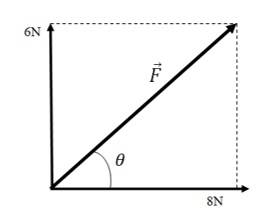
- What is Law of Conservation of Momentum Derivation?
- Principle of the Conservation of Momentum
- Derivation of the Conservation of Momentum
- Example for the Conservation of Momentum
- Illustrated Examples of Conservation of Momentum
- FAQs on Conservation of Momentum
What is Law of Conservation of Momentum Derivation?
The Law of Conservation of Momentum is a universal truth in physics. The rule of conservation of momentum says that the total momentum of a system remains constant.
Principle of the Conservation of Momentum
The Principle of the Conservation of Momentum is an essential aspect of modern physics. It says that overall momentum before and after a collision is identical (provided that no external forces—for example, friction acting on the system).
This is immensely beneficial since scientists can foresee an event’s results long before it takes place.
Derivation of the Conservation of Momentum
Let us assume a scenario where a truck of mass ‘m1’ moves at a given velocity ‘u1,’ and a car of mass ‘m2’ moves at a given velocity ‘u2.’ Therefore, cumulative momentum = m1u1 + m2u2.
If the vehicle collides with the truck for a brief period, the velocity can shift. Due to the truck’s velocity and vehicle study, the variables v1 and v2 are obtained. However, their mass does not alter. Therefore, the average momentum is (m1v1 + m2v2)
Acceleration of car = (V2–U2)/t.
F = ma.
F = force exerted on the car by the truck.
F1 = m2v2−u2/t.
Acceleration of truck = (v1–u1)/t.
If F2 = m1 (v1–u1), then F1 = –F2
m1 (v1– u1)/t = –m2(v2– u2)/t
m2v2-m2u2 = -m1v1+m1u1.
or m1u1+m2u2 = m2v2+m1v1
Example for the Conservation of Momentum
Consider an example of a balloon. The gas particles travel quickly colliding with one another and the balloon’s walls. Even if the gas particles move quicker and slower as they clash, the particles’ overall velocity remains the same.
Law of Conservation of Momentum Derivation in Class 9
This concept is taught in the chapter ‘Force and Law of Motion.’ You will learn about the basics of momentum and its formula. The weightage of this chapter is eight marks in the final exam.
Illustrated Examples of Conservation of Momentum
- A shell is shot from a pistol flying at 300 meters per second, creating an angle of 60 degrees with the horizontal. The arrow collides into two parts before it hits its peak stage. The mass ratio of the two components is 1:3. If the collision wholly halts the smaller piece, find the velocity of the other piece.
Sol: Velocity at the highest point = 360 x cos 60
= 150 m/s
Using momentum conservation,
150 x m = 3m/4 x v
v = 200 m/s.
- A 10-ton wagon travelling at 12 kmph collides an 8-ton wagon in the same direction at a speed of 10 kmph. If the first vehicle’s speed reduces to 8 kmph, determine the other vehicle’s pace after the collision.
Sol: Conserving momentum,
10×12+8×10=10×8+8×v
200−80=8×v
v =15 kmph.
- Two rigid rubber balls A and B of similar mass are pushed around in different directions at a velocity of 0.3 m/second. After the collision, the two balls come to rest with B possessing the maximum velocity of?
Sol: Let the velocity of 2nd ball be v m/s
MA = 0.2 kg;
VA=0.3 m/s;
MB = 0.4 kg;
VB = v
Applying Momentum Conservation:
Initial Momentum= Final Momentum
MAVA +MBVB =0 (final momentum)
0.2×0.3+0.4×v=0
−0.06/0.4=v
v = −0.15 m/s.
Image Courtesy: NCERT
FAQs on Conservation of Momentum
Q: A body of mass 5 kg is acted upon by two perpendicular forces 8 N and 6 N. Give the magnitude and direction of the acceleration of the body.
A:

Given, the mass m = 5 kg The resultant force F of the two forces 6N and 8N is given by, F = √82 +62 = 10 N Acceleration is given by F = ma, a = F/m = 10/5 m/s2 = 2 m/s2 tanθ = 6/8, θ = 36.86°
Q: What is the conservation of momentum?
A: Conservation of momentum states that the total momentum of a system remains constant.
Q: Is the law of conservation of momentum true in the universe?
A: This rule is fundamental since it refers to collisions of all types: the collision of celestial bodies, the collision of subatomic particles, and the collision of ordinary occurrences.
Q: How do you explain momentum?
A: Momentum is the pace at which an object’s mass is travelling; if an object is moving about, it has momentum. An object’s motion is based upon the relative speed of the object and the object’s surroundings.
Q: What types of momentum are there?
A: There are two types of momentum—linear momentum and angular momentum. An object moving at a velocity has linear momentum. On the other hand, a spinning object has angular momentum.
Q: Why is momentum conserved?
A: In case of a collision, the forces on the colliding bodies are often equivalent and opposite at each time. These forces cannot be anything but identical and opposite at the moment of the collision. Therefore, the momentum always is conserved.
Physics Laws of Motion Exam
Student Forum
Popular Courses After 12th
Exams accepted
CA FoundationExams accepted
ICSI ExamExams accepted
BHU UET | GLAET | GD Goenka TestBachelor of Business Administration & Bachelor of Law
Exams accepted
CLAT | LSAT India | AIBEExams accepted
IPMAT | NMIMS - NPAT | SET
Exams accepted
BHU UET | KUK Entrance Exam | JMI Entrance ExamBachelor of Design in Animation (BDes)
Exams accepted
UCEED | NIFT Entrance Exam | NID Entrance ExamBA LLB (Bachelor of Arts + Bachelor of Laws)
Exams accepted
CLAT | AILET | LSAT IndiaBachelor of Journalism & Mass Communication (BJMC)
Exams accepted
LUACMAT | SRMHCAT | GD Goenka Test


